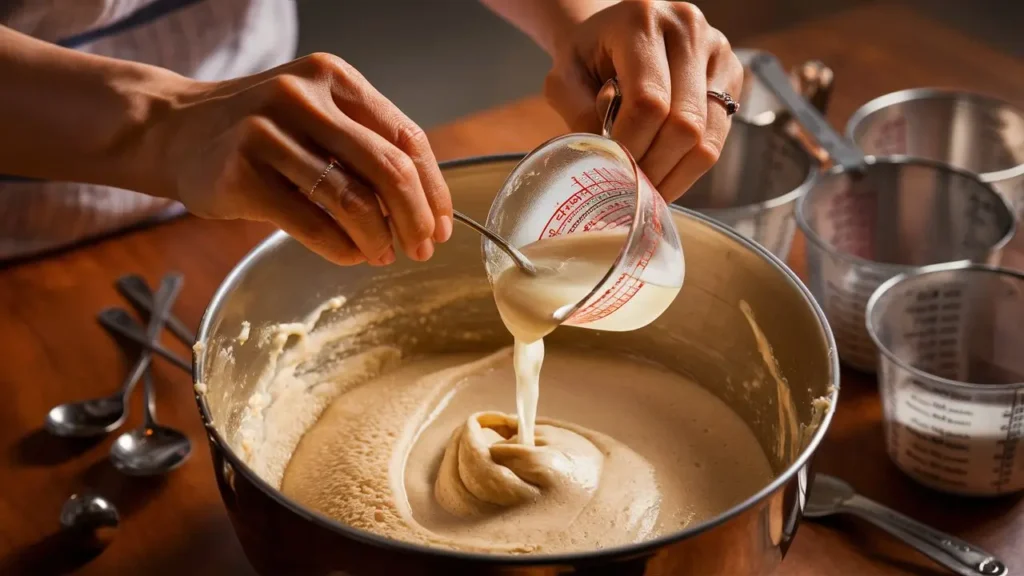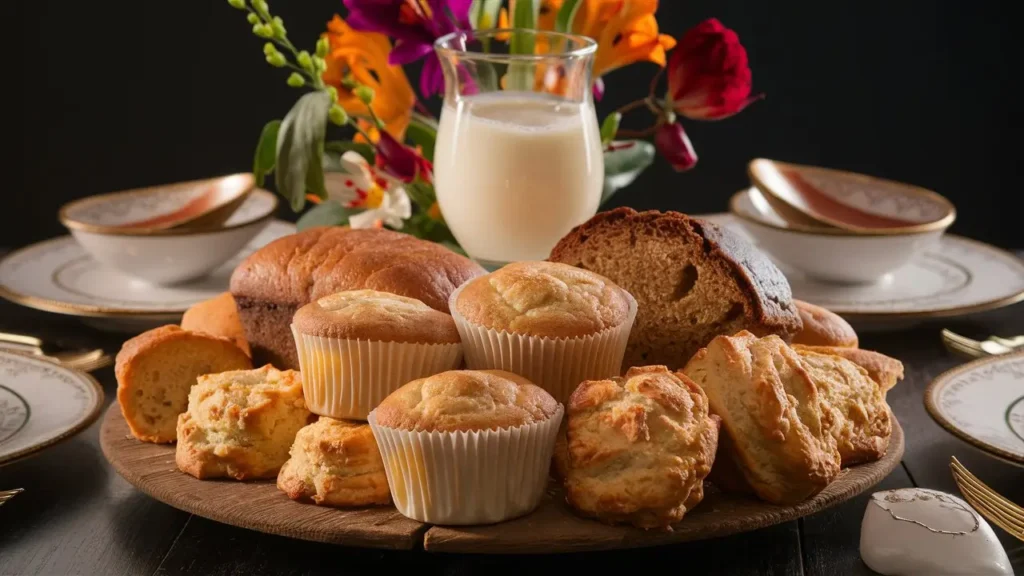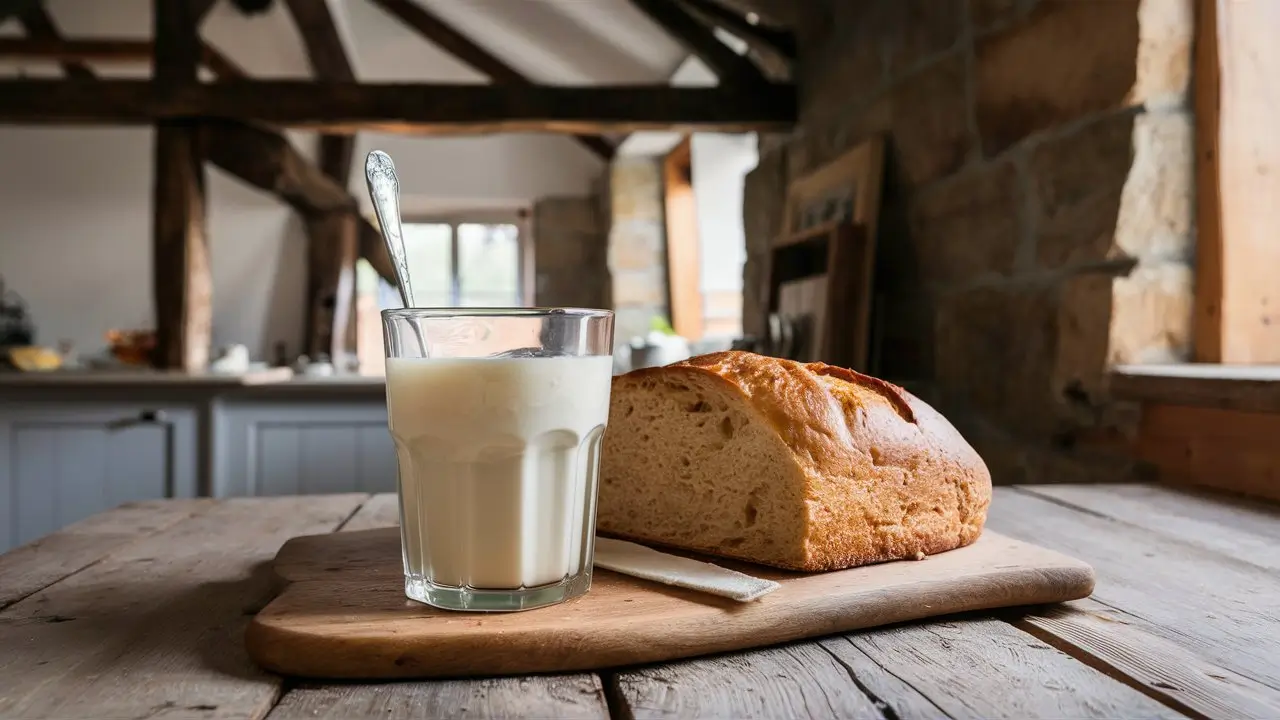Baking is both an art and a science, and every ingredient plays a vital role in creating the perfect texture and flavor. When a recipe calls for milk, most of us instinctively reach for the regular kind sitting in our fridge. But what if you don’t have milk? Or perhaps you want to try something new that adds both flavor and nutritional benefits to your baked goods? You might find yourself asking, “Can I substitute kefir for milk in baking?”
In this guide, we’ll answer that question thoroughly, exploring whether you can substitute kefir for milk in baking and how to do it effectively. From understanding kefir’s unique properties to adjusting your favorite recipes, you’ll discover everything you need to know about this exciting milk alternative.
Table of contents
- Understanding Kefir
- Reasons to Use Kefir in Baking
- How Kefir Interacts with Baking
- Substituting Kefir for Milk
- Types of Recipes Suitable for Kefir
- Common Challenges and Solutions
- Tips for Using Kefir in Baking
- Homemade Kefir for Baking
- Kefir for Dairy-Free Recipes
- FAQs on Kefir Substitution
- Success Stories: Baking with Kefir
- FAQs Section
- Conclusion
Understanding Kefir
What Is Kefir?
What Is Kefir?
Kefir is a fermented dairy product made by culturing milk with kefir grains, a symbiotic mix of bacteria and yeast. The result is a tangy, slightly fizzy drink with a consistency similar to thin yogurt. Known for its impressive probiotic content, kefir has been a staple in Eastern European and Middle Eastern diets for centuries.
If you’re new to kefir, you might wonder, “Can I substitute kefir for milk in baking, or does it work differently?” We’ll dive into the details later, but in short—yes, you can, and it often enhances the outcome of your recipes.
How Is Kefir Different from Milk?
While milk is plain and neutral in flavor, kefir has a tart taste due to its fermentation process. It’s also richer in probiotics, which are beneficial bacteria that support gut health. The acidity in kefir is what makes it stand out in baking, as it reacts with baking soda and baking powder to create a light and airy texture.
Reasons to Use Kefir in Baking
Health Benefits of Kefir
One of the top reasons to use kefir in baking is its impressive health benefits. Unlike regular milk, kefir is packed with probiotics, which help maintain a healthy gut microbiome. These live cultures can improve digestion, boost immunity, and even enhance nutrient absorption. Additionally, kefir is a good source of calcium, protein, and vitamins like B12 and K2, making it a nutrient-dense alternative to milk.
Unique Flavor Enhancement in Baked Goods
Kefir brings a subtle tanginess to baked goods, similar to buttermilk or yogurt, but with its own distinct flavor profile. When people ask, “Can I substitute kefir for milk in baking to improve flavor?” the answer is a resounding yes! The tang enhances the taste of sweet recipes like muffins, cakes, and pancakes by adding depth and complexity.
From pancakes to muffins, kefir can transform your everyday recipes into culinary masterpieces. For a detailed guide to a stunning dessert, explore how to bake the perfect fluffy kefir sheet cake.
How Kefir Interacts with Baking
The Role of Acids in Kefir
The Role of Acids in Kefir
Kefir’s acidity plays a crucial role in the chemistry of baking. When combined with alkaline ingredients like baking soda, the acid reacts to release carbon dioxide. This reaction helps baked goods rise, resulting in a soft, fluffy texture. So if you’re still wondering, “Can I substitute kefir for milk in baking and get the same texture?” you can rest assured that kefir may even improve it.
Impact on Texture and Structure
Thanks to its fermentation process, kefir contains enzymes and proteins that can tenderize gluten in doughs and batters. This means your baked goods will not only rise better but also have a tender, moist crumb. Whether you’re baking a batch of scones or a loaf of bread, kefir ensures a melt-in-your-mouth texture.
Substituting Kefir for Milk
Direct Substituion Ratios
The great news is that substituting kefir for milk in baking is a breeze! For most recipes, you can use a 1:1 ratio—simply replace one cup of milk with one cup of kefir. However, due to kefir’s thicker consistency, you may need to slightly adjust the liquid content depending on the recipe.
When people ask, “Can I substitute kefir for milk in baking without any major changes?”, the answer is generally yes, but small adjustments can help perfect your results.
Adjusting Baking Recipes for Kefir
Since kefir is more acidic than milk, you might need to tweak other ingredients. For example:
- If your recipe already uses baking soda, the acidity in kefir will activate it effectively.
- If no acidic ingredient is present (like vinegar or lemon juice), adding kefir will serve as a built-in acid for chemical leavening.

For recipes that are particularly sweet, you may want to reduce the sugar slightly to balance out kefir’s tartness.
Types of Recipes Suitable for Kefir
Cakes and Muffins
Kefir works wonders in recipes like cakes, muffins, and cupcakes where a tender, moist texture is essential. Its acidity interacts with leavening agents like baking soda to create a light and fluffy structure. For example:
- Chocolate Cake: Replace milk with kefir for a rich, tangy undertone that enhances the chocolate flavor.
- Blueberry Muffins: Kefir’s slight tartness pairs beautifully with the sweetness of fruits, adding a balanced flavor to your muffins.
Pancakes and Waffles
Want fluffier pancakes or waffles? Kefir is your secret weapon! The acidic properties in kefir react with baking soda to give your pancakes that delightful rise, resulting in a light, airy texture. Plus, it adds a subtle tang that complements syrup, honey, or fresh fruit toppings.
Bread and Scones
Kefir shines in savory baking recipes too. In breads and scones, kefir helps create a soft crumb while maintaining a hearty structure. It’s especially useful in recipes that rely on fermentation, like:
- Quick Breads: Think banana bread or zucchini bread, where kefir keeps the batter moist and tender.
- Scones and Biscuits: Kefir makes them flaky and flavorful, perfect for pairing with jam or clotted cream.
Common Challenges and Solutions
Balancing Acidity
One common challenge when using kefir is managing its acidity. If your recipe already includes other acidic ingredients (like lemon juice or buttermilk), you may need to reduce or eliminate them to prevent an overly tangy result. Additionally, taste your batter or dough before baking to ensure the flavors are balanced.
Adjusting Sweetness in Recipes
Because kefir has a tangier profile than milk, it can slightly reduce the perceived sweetness of your baked goods. To counter this, consider:
- Adding a tablespoon or two of extra sugar for sweeter recipes.
- Pairing kefir with naturally sweet ingredients, such as honey, maple syrup, or fruit.
Tips for Using Kefir in Baking
Combining with Other Dairy Products
Kefir can be combined with other dairy products like cream, butter, or yogurt for a richer texture and flavor. For example, using half kefir and half buttermilk can offer the best of both worlds—tanginess and creaminess—in recipes like pound cakes or cheesecakes.
Avoiding Over-Fermentation Effects
Kefir continues to ferment over time, which can make it taste sharper if left unused for too long. When using kefir in baking, ensure it’s fresh (but not expired) to avoid an overly tangy or sour flavor in your finished product.
Homemade Kefir for Baking
How to Make Kefir at Home
If you can’t find kefir at your local store or prefer to make it fresh, preparing homemade kefir is surprisingly simple. All you need are milk (cow’s or goat’s milk works best) and kefir grains, which are available online or at specialty stores. Here’s a quick process to follow:
- Ingredients: Use 1 tablespoon of kefir grains for every 1 cup of milk.
- Fermentation: Place the grains in a clean glass jar, pour milk over them, and cover loosely with a lid or cloth to allow airflow.
- Waiting Time: Let it sit at room temperature for 24-48 hours until it thickens and develops a tangy taste.
- Straining: Strain the grains out, and your kefir is ready to use! The grains can be reused for the next batch.
This homemade kefir can be customized to your desired thickness and tanginess, making it a perfect fit for your baking needs.
Best Practices for Baking with Homemade Kefir
- Consistency Matters: If your homemade kefir is too thick, dilute it with a little water to match the consistency of store-bought kefir for even substitution.
- Freshness First: Use kefir within 2-3 days of fermentation for the best flavor in baking.
- Storage: Always refrigerate unused kefir to prevent over-fermentation.
Kefir for Dairy-Free Recipes
Plant-Based Kefir Alternatives
For those following a dairy-free or vegan diet, plant-based kefir alternatives are a fantastic option. These are typically made from almond, coconut, or soy milk and are cultured with probiotics to mimic the tangy taste of traditional kefir. These work well in baking, though you may need to adjust your recipe slightly due to their lower fat content.
Comparing Kefir with Other Milk Substitutes
How does kefir stack up against other milk substitutes like almond milk, oat milk, or soy milk in baking? Here’s a quick comparison:
- Tanginess: Kefir adds a unique tart flavor that most plant-based milks lack.
- Texture: The creamy consistency of kefir creates a moist crumb, while thinner alternatives like almond milk may require added fat (e.g., oil or butter).
- Leavening Power: The acidity in kefir interacts with baking soda to help your baked goods rise, unlike neutral milk substitutes.
Pro tip: For vegan recipes, make sure the kefir substitute you use is labeled as “cultured” to get similar results.
FAQs on Kefir Substitution
Can I Use Flavored Kefir in Baking?
Yes, but keep in mind that flavored kefir (e.g., strawberry, vanilla) may add sweetness and alter the overall flavor of your recipe. It’s best used in sweet baked goods like muffins or cupcakes where the flavor complements the recipe.
Does Kefir Alter Baking Time?
Not significantly. However, because kefir adds moisture to the batter, denser recipes like breads or cakes may require an additional 5-10 minutes of baking time. Be sure to check doneness with a toothpick.
What Is the Shelf Life of Kefir-Based Baked Goods?
Baked goods made with kefir tend to stay moist longer than those made with regular milk due to kefir’s natural hydration properties. Store them in an airtight container for 3-5 days at room temperature or up to a week in the fridge.
Success Stories: Baking with Kefir
Testimonials from Bakers
Bakers around the world have embraced kefir as a versatile ingredient, sharing rave reviews about its benefits in baking:
- Emma, a home baker: “I replaced milk with kefir in my chocolate cake recipe, and it turned out to be the moistest cake I’ve ever made! The tangy flavor also enhanced the richness of the chocolate.”
- James, a bread enthusiast: “Using kefir in my sourdough bread added a depth of flavor I wasn’t expecting. The crumb was perfect, and my family couldn’t get enough!”
- Sophia, a cupcake lover: “I tried kefir in my vanilla cupcake recipe, and they came out so fluffy and light. I’ll never go back to plain milk again!”
Popular Recipes Using Kefir
If you’re looking for inspiration, here are a few crowd-favorite recipes that feature kefir:
- Lemon Kefir Pound Cake: The tartness of kefir pairs beautifully with citrus flavors.
- Banana Kefir Bread: A healthier take on traditional banana bread, packed with probiotics.
- Kefir Pancakes: Perfectly fluffy pancakes that are ideal for weekend brunches.
- Kefir Scones: Soft and flaky scones that are a delight with jam or cream.

FAQs Section
Can Kefir Replace Buttermilk?
Absolutely! Kefir can be used as a direct substitute for buttermilk in a 1:1 ratio. Its similar tangy profile and consistency make it an excellent choice for recipes requiring buttermilk, such as pancakes, biscuits, or cornbread.
How Do I Store Kefir for Baking?
Kefir should be stored in the refrigerator to maintain its freshness and prevent over-fermentation. Once opened, it’s best to use it within 7-10 days for optimal flavor and potency.
Can I Use Kefir in Gluten-Free Baking?
Yes, kefir works wonderfully in gluten-free recipes. Its acidity helps tenderize gluten-free flours, improving texture and moisture. Try it in gluten-free muffins, pancakes, or banana bread for great results.
What’s the Difference Between Kefir and Yogurt in Baking?
While both kefir and yogurt are fermented dairy products, kefir is thinner and contains more probiotics. It’s easier to pour into batters, while yogurt might need to be diluted with water or milk to match the same consistency.
Is Kefir Suitable for Vegan Baking?
Plant-based kefir alternatives can be used in vegan baking. Look for cultured versions made from almond, soy, or coconut milk, as these mimic the tanginess and functionality of traditional kefir.
Conclusion
In the world of baking, kefir stands out as a versatile and nutrient-rich alternative to milk. Its unique tangy flavor, probiotic benefits, and ability to enhance the texture of baked goods make it a valuable ingredient for both sweet and savory recipes. Whether you’re whipping up fluffy pancakes, moist cakes, or tender scones, kefir can elevate your creations while contributing to a healthier diet.
So the next time you’re in the kitchen and wondering if you can substitute kefir for milk in baking, go for it! Not only will your baked goods turn out delicious, but you’ll also enjoy the added nutritional perks. Happy baking!


1 thought on “Can I Substitute Kefir for Milk in Baking? A Comprehensive Guide”